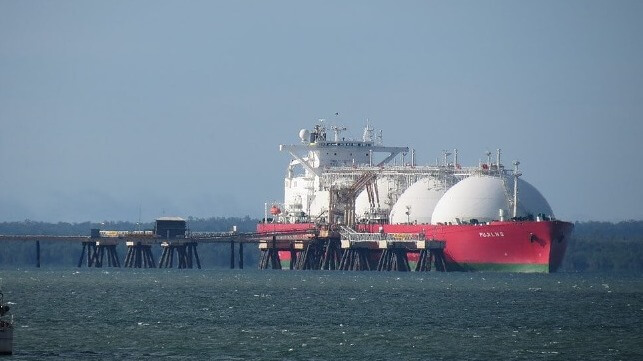Study: "Dual-Use" LNG Shipping Could Transform Carbon Capture

Carbon capture is one of the key technologies proposed as a potential strategy in decarbonization, and carbon-intensive industries see it as their most viable carbon management approach. But carbon capture faces multiple developmental challenges, including the need to transport the CO2 from the source to the site of its usage or long-term isolation. Pipelines are a possibility for short runs, but the high capital cost for distances over about 100 miles make this approach too expensive to scale.
In an attempt to solve the transportation puzzle for carbon capture technologies, two researchers at the University of Houston, Texas have proposed filling up LNG carriers with liquefied CO2 on their backhaul routes.
In a recent article, Ramanan Krishnamoorti, Chief Energy Officer at the University of Houston, and others highlight a new business opportunity for LNG carrier operators. The specialized cryogenic tanks used in transport of LNG can also be used to transport captured carbon, an idea they refer to as "dual-use shipping."
Fundamentally, their concept explores how dual-use shipping can utilize vessels that transport LNG one way and carry captured CO2 on their return journey. The CO2 be later injected into an oil reservoir for enhanced oil recovery (EOR) at a location near to an LNG loading terminal.
The researchers looked into the case of trading carbon as a physical commodity between South Korea or Japan and areas with high sequestration capacity, such as the US Gulf of Mexico. South Korea and Japan lack a comparable capacity to sequester carbon emissions, yet they are the largest importers of LNG from Gulf of Mexico.
“Consider this: It takes about 25 days for LNG shipped from the U.S Gulf Coast to reach South Korea or Japan. The ship then returns cargo-free, taking another 25 days and incurring the same fixed crew, maintenance and hull costs as the laden ship, while the fuel cost for sailing the empty ship are only about 20 percent lower. Forgoing this cost-saving, the returning ship can be laden with carbon dioxide captured at power plants or refineries close to LNG import terminals in Asia and then sequestered offshore in the Gulf of Mexico as the ship returns to the LNG-exporting facilities,” proposed Dr. Krishnamoorti and Aparajita Datta in an article published by the Houston Chronicle.
There are already patents and designs to build ships with the exact specifications for dual-use shipping of LNG and carbon, though it is only approved for smaller ships at present.
Ships listed as LPG (Liquefied Petroleum Gas) tankers are used in the Baltic region to transport CO2 for industrial applications. Another six Norwegian ships have dual-use capabilities. Thus, with capital investment, the authors say that there is no scientific reason why dual-use shipping cannot be up-scaled to larger vessels.
